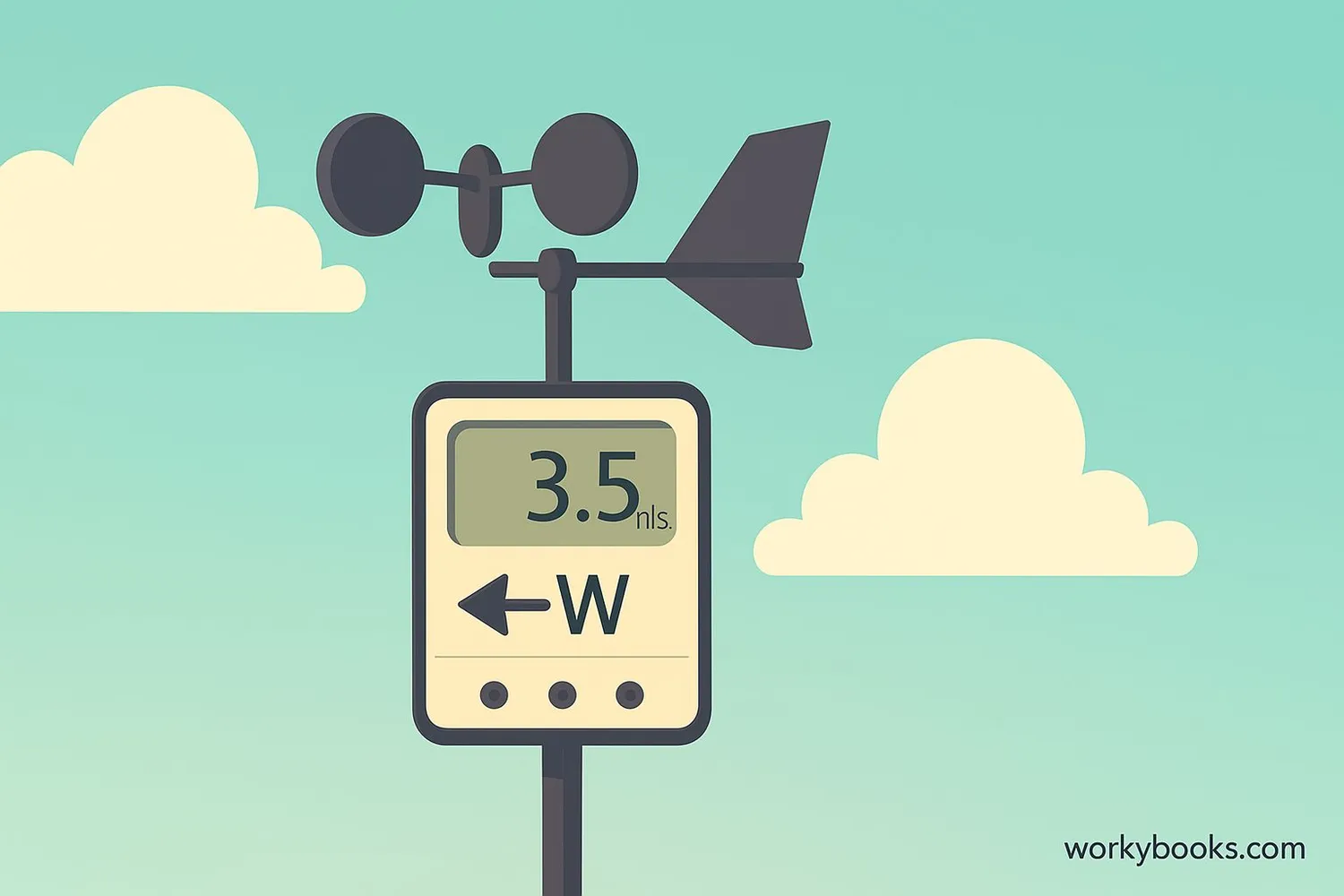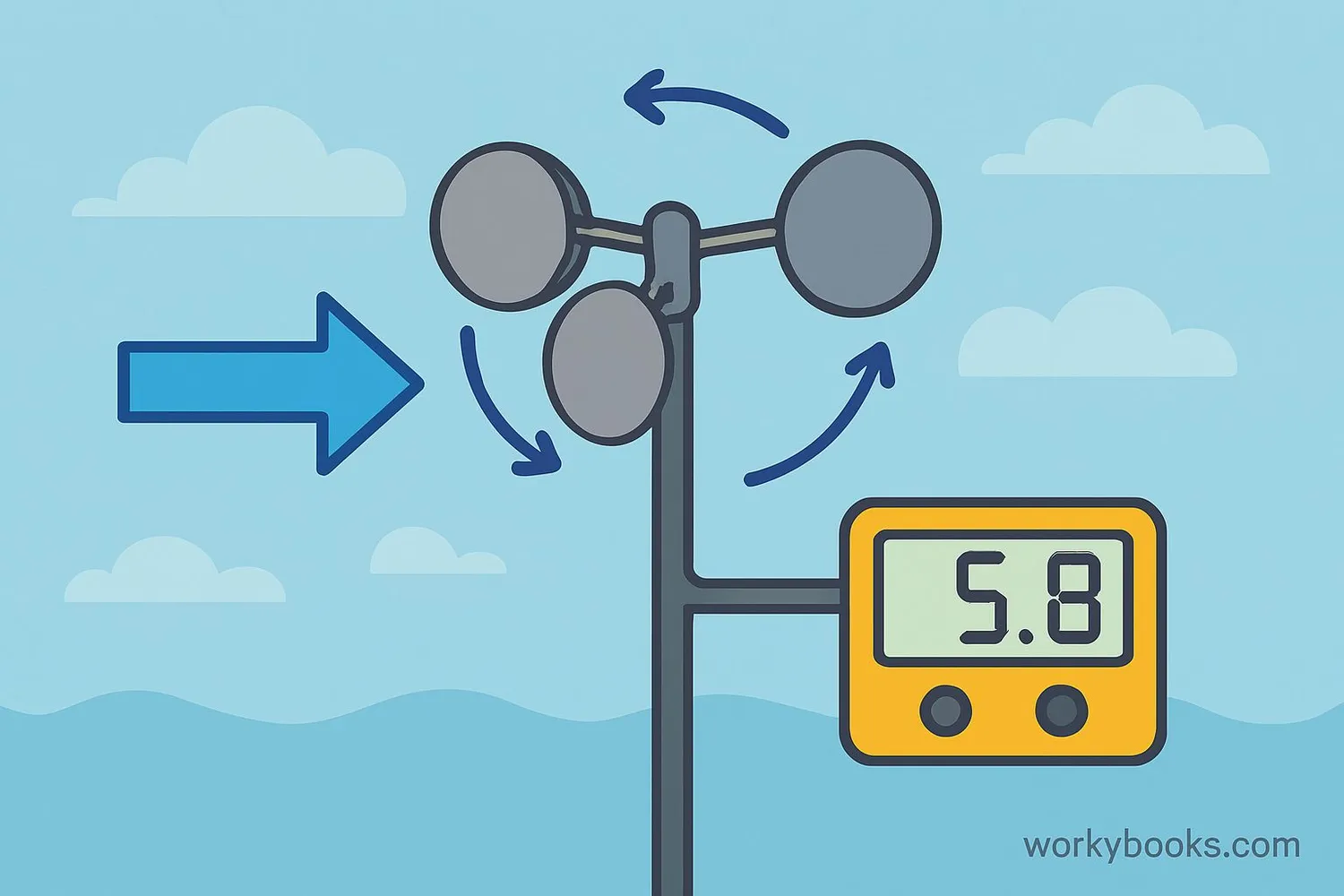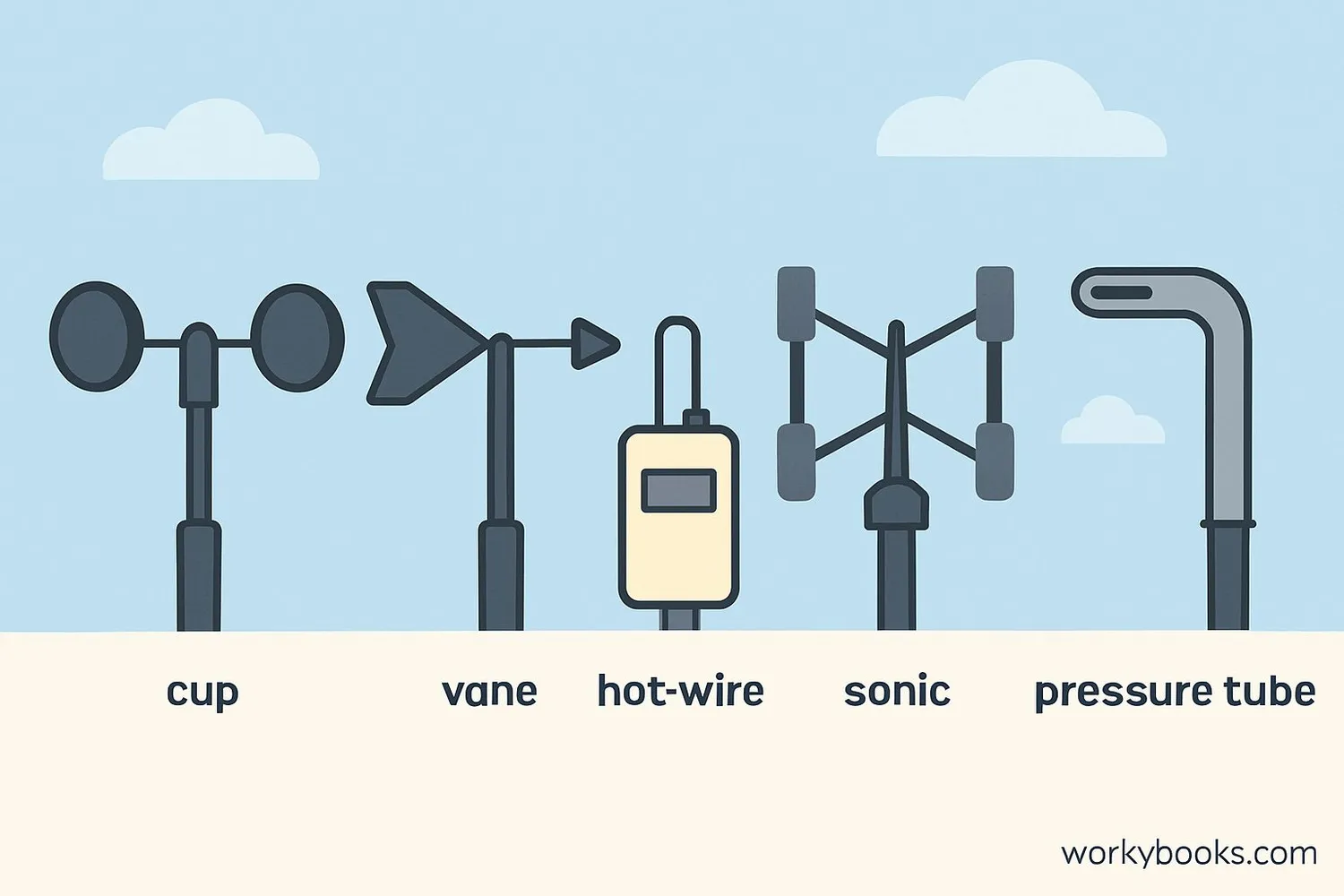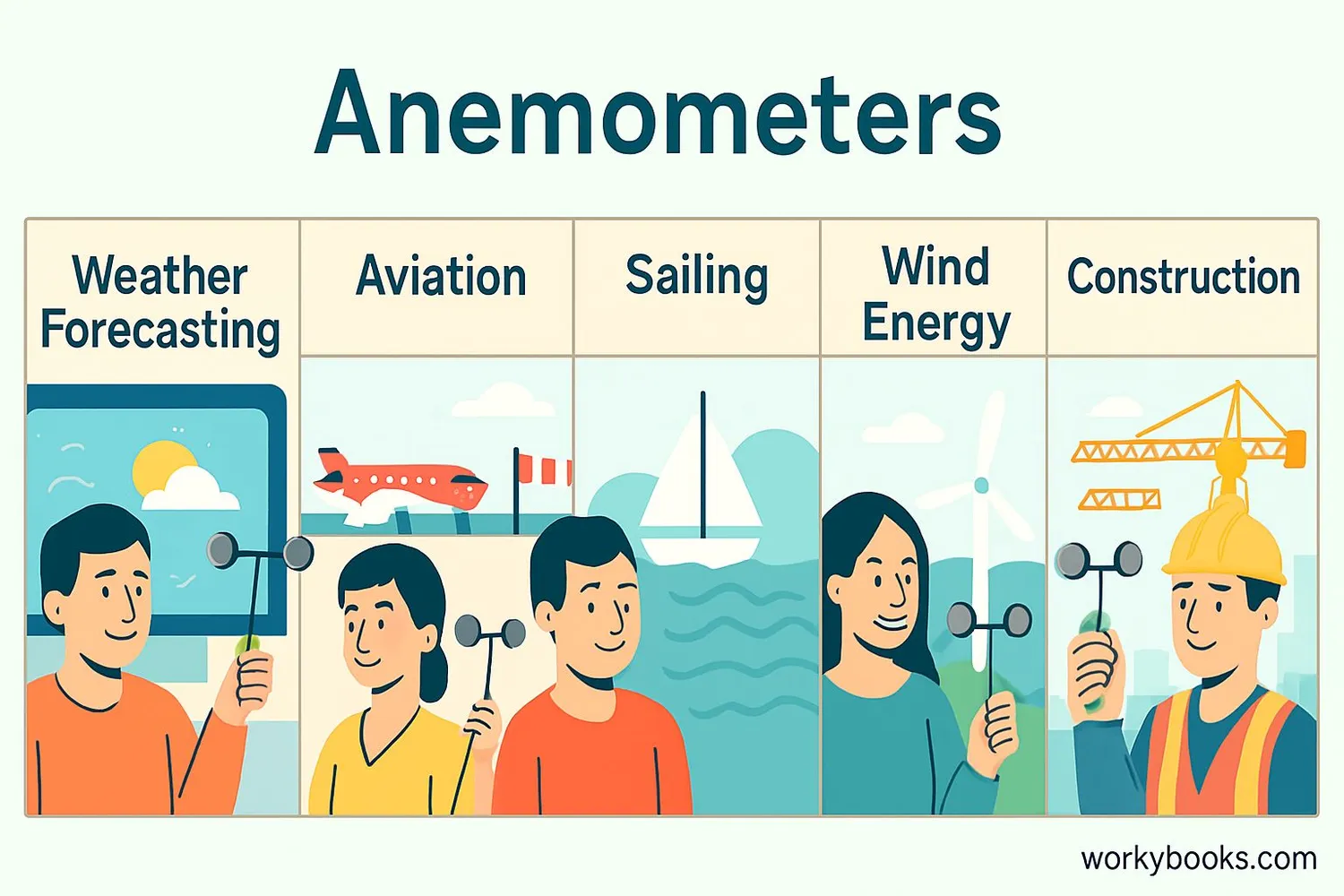Anemometers - Definition, Examples, Quiz, FAQ, Trivia
Learn how scientists measure wind speed and direction
What is an Anemometer?

An anemometer is a special tool that measures how fast the wind is blowing. The name comes from the Greek word "anemos" which means wind. Scientists and meteorologists use anemometers to study weather patterns and make weather forecasts.
The most common type is the cup anemometer, which has three or four cups that catch the wind and spin around. The faster the wind blows, the faster the cups spin! Anemometers help us understand wind patterns and are important for weather forecasting, sailing, and even flying kites.
Wind Measurement Fact!
Anemometers measure wind speed in miles per hour (mph), kilometers per hour (km/h), knots, or meters per second (m/s).
How Anemometers Work

The cup anemometer works on a simple principle: wind pushes against the curved surfaces of the cups, making them spin. Here's how it works step by step:
Wind Hits Cups
Wind pushes against the curved surfaces of the cups
Cups Rotate
The cups spin around a vertical axis
Rotation Measured
A sensor counts how many times the cups rotate
Speed Calculated
A computer calculates wind speed from rotation count
Data Displayed
Wind speed appears on a digital display
The cup anemometer was invented in 1846 by John Thomas Romney Robinson. Modern versions often include a wind vane to measure direction and electronic sensors to record data automatically.
Measuring Wind Direction
Many anemometers have a wind vane that points in the direction the wind is coming from. This helps meteorologists understand weather patterns.
Types of Anemometers

There are several different types of anemometers designed for specific purposes:
Cup Anemometer
The classic design with rotating cups that catch wind
Vane Anemometer
Combines wind speed and direction measurement
Hot-Wire Anemometer
Uses heated wire to measure tiny air currents
Ultrasonic Anemometer
Measures wind speed using sound waves
Pressure Tube Anemometer
Uses air pressure differences to calculate wind speed
Each type has advantages for different situations. Cup anemometers are great for weather stations, hot-wire anemometers are sensitive enough for laboratories, and ultrasonic anemometers work well in extreme conditions because they have no moving parts.
Why Anemometers Matter

Anemometers are essential tools in many fields. Here's why they're so important:
Weather Forecasting
Meteorologists use wind data to predict weather patterns
Aviation Safety
Pilots need wind information for safe takeoffs and landings
Wind Energy
Wind farms use anemometers to find the best locations
Without anemometers, we wouldn't have accurate weather forecasts, which help us prepare for storms. Sailors and pilots depend on wind measurements for safe travel. Scientists use anemometers to study climate change, and engineers use them to design buildings that can withstand strong winds.
Anemometers also help in sports like sailing and hang gliding, where wind conditions affect performance. Even construction workers use portable anemometers to make sure it's safe to work on tall buildings or cranes when it's windy.
Anemometer Knowledge Quiz
Test what you've learned about anemometers with this quiz! Answer all 5 questions to see how much you know.
Frequently Asked Questions
Here are answers to some common questions about anemometers:
Wind Measurement Trivia
Discover some fascinating facts about anemometers and wind measurement:
Historical Measurement
The first known anemometer was invented in 1450 by Italian architect Leon Battista Alberti. It was a simple mechanical device that swung a plate to indicate wind force.
Extreme Accuracy
Modern ultrasonic anemometers can measure wind speed accurate to 0.01 m/s and wind direction to within 1 degree. They have no moving parts, making them ideal for harsh environments.
Martian Winds
The Mars Rover has anemometers to measure wind on the Red Planet. Martian winds can reach 60 mph, but because the atmosphere is so thin, they feel like a gentle breeze.
Nature's Anemometers
Birds and insects have sensory systems that act like natural anemometers. Some butterflies can detect wind speeds as low as 0.5 m/s - about 1.1 mph!





